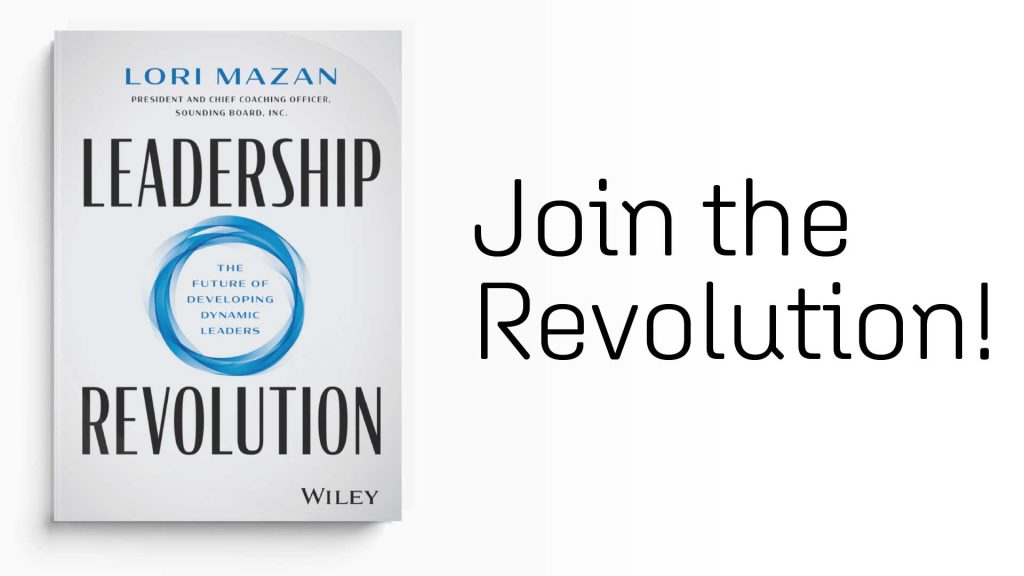As a technology strategist and an executive coach, having led Intel’s corporate strategy office in a time of profound market change and volatility, I am acutely aware what often marks the thin line between stagnation and growth is whether leaders possess the ability to remain agile, to adapt to changes while guiding their teams through transformations. Coaching clients often come to me with somewhat ambiguous problem statements in and around “strategy,” such as:
“Change is all around me and accelerating. My team needs to transform and become more agile in our business and in our leadership style.”
“We have a solid strategy, but it is not well understood throughout the organization, and my leaders don’t seem to all be pulling in the same direction.” or
“My boss tells me I’m not strategic enough … I’m not sure what that even means; how do I become more strategic?”
As I have engaged with these clients over the years, I have come to an interesting realization: Strategy is — even at very senior levels of many organizations — an ill-defined and somewhat elusive concept. In some cases, the ambition to “be more strategic” is just coded language for “becoming a better leader.” This could mean developing the ability to articulate and inspire with a vision, improving executive presence, building trust, resolving conflict, or any other combination of the leadership capabilities that are attributed to a dynamic business leader. But in other cases, what leaders are really seeking is help with articulating, pressure-testing, validating, or implementing a new or existing business or transformation strategy.
Most coaches are well-versed in developing dynamic leaders, and excellent companies like Sounding Board specialize in deploying talent, tools & techniques that can lead to meaningful human transformation. But when it comes to business transformation, a coaching stance is far less prevalent. Instead, businesses tend to turn to specialized consultants such as an internal “strategy office” or highly skilled and paid management consultants.
I do not think that there is anything wrong with tapping into specialized expertise to solve hard problems, but when it comes to business strategy, I’ve often witnessed a phenomenon that Frank Vermeulen describes in his excellent HBR article: “The strategy consultants come in, do their work, and document the new strategy in a PowerPoint presentation and a weighty report. Town hall meetings are organized, employees are told to change their behavior, balanced scorecards are reformulated, and budgets are set aside to support initiatives that fit the new strategy. And then nothing happens.” This points to some common failure points that I have seen over and over in my coaching practice.
For one, I have come to strongly believe that — rather than being relegated to being the domain of specialists — business strategy acumen is a skill that needs to be developed at all levels of the organization. Strategies should be developed by leadership teams, not individuals. And strategies become much more actionable if they are systematically cascaded and interlinked at every level of the organization. But most importantly, the boundaries between business strategy development and leadership development are not clearly defined. Without deeply engaging in a coaching conversation with a leader and their team, who is to say whether a strategy is falling flat because the competitive analysis was off or because the leadership team fears engaging in conflict and the resulting lack of clarity prevents team members from making decisions they will stick to?
The reality is that today, more than ever, business success requires the ability to dynamically adapt, evolve, and transform both leadership style and business strategy. In other words, to develop the full spectrum of leadership, we are best served by looking at both the potential for human transformation and business transformation.
With this in mind, my partners and I have been on a mission to build a coaching practice that is aimed at truly integrating human and business transformation. Our initial experiments focused on supercharging strategy development by introducing a simple but powerful Strategy Development Framework, teaching leadership teams some fundamental coaching skills, and then asking them to apply these to the strategy development process. As we’ve engaged more deeply with clients, we have found that diverse customers, ranging from small enterprises merging with Fortune 500 companies to specialized units within tech giants, have successfully navigated complex strategy and leadership challenges through our integrated coaching approach. By engaging teams in collaborative workshops and always paying equal attention to business and human transformation, these teams have achieved significant breakthroughs. They’ve managed to realign with corporate goals, redefine success metrics in emerging markets, optimize resource allocation amidst stiff competition, revolutionize quality assurance processes, and ascend global value chains. Our approach has not only facilitated these organizations in maintaining critical talent but also propelled them toward transformative growth and market leadership. Across industries and unique business quandaries, our coaching has consistently been a catalyst for strategic innovation and decisive executive action.
Encouraged by our early results, we have now launched a unique assessment tool, the Trigate Strategy Diagnostic Survey™ (TSDS). It is designed to be a complement to popular leadership assessment tools like “Hogan’s Team Report” or “6 Team Conditions,” which focus on assessing the dimensions of human transformation. In contrast, the TSDS uniquely focuses on business transformation by diagnosing the strengths and weaknesses of teams as it pertains to articulating, communicating, and implementing business strategies. It is administered as an online survey to be taken by the members of a leadership team, including the team’s leader. By aggregating and analyzing individual responses, it produces a detailed written report that assesses the team’s standing on the key elements of our Strategy Development Framework as well as leadership alignment on the strategy and the strength of communication efforts around the strategy.
We have found that the TSDS is a great starting point for a full-spectrum coaching engagement as it gives teams and leaders valuable data on where to focus the coaching effort for maximum effect.
In a world where business variables are in constant flux, the traditional separation of personal development and business strategy is no longer sufficient for emerging leaders. By recognizing and integrating the interconnected facets of human and business transformation, our approach offers a more holistic path forward. If I’ve managed to pique your curiosity and you’d like to know more, I’d encourage you to leave a comment below or contact me directly at bernhard@trigatecoaching.com. We are offering an opportunity to begin this integrated development journey with a complimentary self-assessment. This starting point can then lead to a customized coaching plan designed to address your unique challenges and goals in both personal and business transformation.
Bernhard Ries (PCC) is an Executive Coach with over 30 years of experience in the Tech Sector in roles spanning software engineering, marketing, and corporate strategy. He is a co-founder and Managing Partner of Trigate Coaching. Previously, he led Intel’s Corporate Strategy Office driving the transformation of the company. He is an ICF accredited and Hudson Certified Coach.









